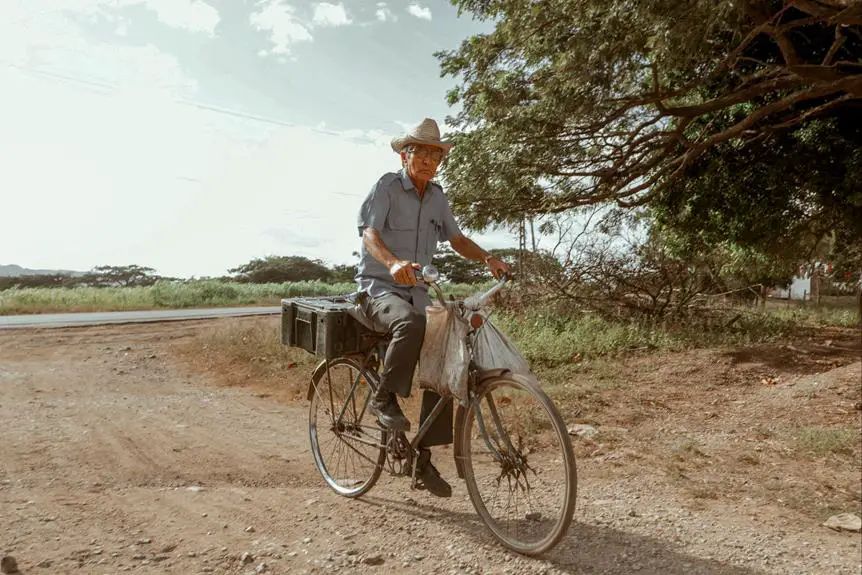Do fabric grow bags need drainage holes?
Understanding the importance of proper drainage for your plants is crucial.
In this guide, you'll explore the necessity of drainage holes in fabric grow bags and how they can impact the health and growth of your plants.
By the end, you'll have a clear understanding of the role drainage holes play in fabric grow bags and be equipped to make informed decisions for your gardening needs.
Key Takeaways
- Fabric grow bags promote healthier and more vigorous growth compared to plastic pots.
- Drainage holes in plant containers prevent waterlogged soil and promote healthy root growth.
- Without drainage holes, fabric grow bags can lead to waterlogged roots and hinder plant growth.
- Proper drainage is essential for maintaining plant vigor and productivity.
Benefits of Fabric Grow Bags
Fabric grow bags offer excellent aeration for plant roots, promoting healthier and more vigorous growth compared to traditional plastic pots. The porous fabric allows air to reach the roots, preventing the soil from becoming waterlogged and reducing the risk of root rot. This increased aeration also encourages beneficial bacteria and microorganisms to thrive in the soil, creating a more balanced and fertile environment for plant roots to develop. As a result, plants grown in fabric grow bags often exhibit stronger root systems, leading to improved nutrient uptake and overall plant health.
In addition to improved aeration, fabric grow bags also provide a more natural growing environment for plants. Unlike plastic pots, fabric grow bags allow roots to grow more freely, preventing them from becoming root-bound. This unrestricted root development leads to healthier and more robust plants with greater resistance to environmental stressors. Furthermore, fabric grow bags are lightweight, making them easier to transport and store compared to traditional pots, offering a convenient and practical solution for gardening enthusiasts.
Despite these benefits, it's important to note that fabric grow bags may dry out more quickly than plastic pots, requiring more frequent watering. Additionally, they may degrade over time, potentially leading to a shorter lifespan compared to plastic containers.
Understanding Drainage in Plant Containers
You need to understand the importance of drainage holes in plant containers to ensure that excess water can escape, preventing waterlogged soil. Without proper drainage, the roots of your plants can become suffocated and prone to rot.
It's crucial to grasp how drainage works in plant containers to maintain healthy growing conditions for your plants.
Importance of Drainage Holes
Ensure that your plant containers have proper drainage to prevent waterlogged soil and promote healthy root growth. Adequate drainage in plant containers is crucial for several reasons.
Firstly, it allows excess water to escape, preventing waterlogging, which can lead to root rot and other diseases. Proper drainage also helps to aerate the soil, ensuring that oxygen reaches the roots, promoting healthy growth.
Without adequate drainage, plants may suffer from stunted growth, wilting, and even death. Additionally, good drainage prevents the accumulation of salts in the soil, which can be harmful to plant roots. It also helps to regulate the soil's temperature, preventing it from becoming too hot or cold, which can stress the plants.
Preventing Waterlogged Soil
Preventing waterlogged soil in plant containers involves ensuring proper drainage, allowing excess water to escape and preventing root rot and other diseases. To achieve this, consider the following:
- Proper Drainage: Ensure containers have drainage holes to allow excess water to escape.
- Quality Soil Mix: Use well-draining soil to prevent water from pooling around the roots.
- Monitor Watering: Avoid overwatering by checking soil moisture before watering.
- Soil Aeration: Incorporate materials like perlite or sand to improve soil aeration and drainage.
- Elevate Containers: Place containers on pot feet or bricks to facilitate drainage and prevent waterlogging.
Potential Problems Without Drainage Holes
Without proper drainage holes, your fabric grow bags can lead to waterlogged roots, which can hinder plant growth and cause root rot.
Additionally, the lack of drainage can lead to an imbalance in soil nutrients, affecting the overall health and development of your plants.
It's essential to address these potential problems to ensure the success of your plants in fabric grow bags.
Waterlogged Roots Risk
To avoid waterlogged roots risk in fabric grow bags, proper drainage is essential for healthy plant growth. Without adequate drainage, fabric grow bags can lead to a host of problems that can impact your plants' health and growth. Here are the potential risks of waterlogged roots in fabric grow bags:
- Oxygen deprivation leading to stunted growth
- Increased susceptibility to root diseases such as root rot
- Nutrient deficiencies due to poor root health
- Hindered water uptake by the roots
- Overall decline in plant vigor and productivity
Soil Nutrient Imbalance
Facing a soil nutrient imbalance without adequate drainage holes in fabric grow bags can impede proper nutrient uptake and lead to diminished plant health and productivity. Without proper drainage, soil aeration is compromised, disrupting the balance of essential nutrients for plant growth. This imbalance can result in poor root development and function, leading to decreased water and nutrient uptake.
Additionally, without adequate drainage, the risk of root rot increases, further exacerbating nutrient imbalance and hindering plant health. To prevent soil nutrient imbalance in fabric grow bags, it's crucial to ensure proper drainage to maintain soil aeration and prevent waterlogging.
Factors Affecting Drainage in Fabric Grow Bags
When using fabric grow bags, it's important to consider the factors that affect drainage. Proper drainage is crucial for the health of your plants, and several factors can impact it:
- Soil Structure: The type of soil used in fabric grow bags can greatly affect drainage. Different soil compositions have varying water retention and drainage capabilities.
- Root Growth: The development of roots within the grow bags can influence drainage. Overgrown roots may impede water flow, affecting drainage.
- Weather Conditions: External factors such as heavy rainfall or high humidity levels can impact drainage in fabric grow bags. It's essential to consider how weather patterns may affect water retention and drainage.
- Bag Placement: Where you position your fabric grow bags can affect drainage. Placing them on a slope can impact water flow and drainage.
- Bag Size: The size of the fabric grow bags can influence drainage. Larger bags may retain water differently than smaller ones, affecting drainage and soil aeration.
Best Practices for Drainage in Fabric Grow Bags
Consider using a well-draining soil mix and adding a layer of small rocks or gravel at the bottom of the fabric grow bags to ensure proper drainage. This practice helps to prevent overwatering risks and encourages proper watering techniques for your plants. When water accumulates at the bottom of fabric grow bags, it can lead to root rot and other issues. By incorporating a layer of small rocks or gravel, excess water can drain more effectively, preventing water from saturating the soil and causing harm to the plant roots.
In addition to using a well-draining soil mix and adding a layer of small rocks or gravel, it's important to monitor your watering habits. Fabric grow bags typically require more frequent watering than traditional pots due to their breathable nature, which allows the soil to dry out more quickly. However, it's crucial to strike a balance and avoid overwatering, as this can still pose a risk to your plants.
Be attentive to the moisture levels in the soil and adjust your watering frequency accordingly, taking into account factors such as temperature and humidity. These best practices for drainage in fabric grow bags can contribute to a healthier growing environment for your plants.
Alternatives to Traditional Drainage Holes
To ensure proper drainage in fabric grow bags, you can explore alternatives to traditional drainage holes, such as using elevated platforms or creating a sloped base. These alternatives can be especially useful in situations where adding drainage holes may not be feasible or desirable.
Here are some alternative methods to consider:
- Elevated Platforms: Placing the fabric grow bags on elevated platforms allows excess water to flow out from the bottom, preventing waterlogging and promoting better aeration for the roots.
- Sloped Base: By creating a slight slope in the base of the grow bags, you can encourage water to drain towards one side, preventing water from pooling at the bottom.
When considering alternatives to traditional drainage holes, it's also important to explore alternative materials that may offer better drainage properties. Additionally, incorporating appropriate watering techniques, such as bottom-watering or using moisture-retaining materials, can further enhance the drainage capabilities of fabric grow bags. These methods can help maintain optimal moisture levels while preventing water stagnation.
Myth Busting: Common Misconceptions About Drainage
Fabric grow bags don't necessarily require traditional drainage holes. Myth: 'Fabric grow bags need drainage holes just like traditional pots.' Debunked: Fabric grow bags made from breathable fabric actually promote air pruning of roots, preventing root circling and promoting a healthier root system without the need for traditional drainage holes.
Myth: 'Without drainage holes, plants in fabric grow bags will suffer from waterlogged soil.' Debunked: Proper drainage techniques such as using well-draining soil, adding a layer of rocks at the bottom, or elevating the bags on a slight slope can effectively manage water without traditional drainage holes.
Myth: 'Fabric grow bags without drainage holes lead to overwatering.' Debunked: With alternative solutions like monitoring soil moisture, adjusting watering frequency, and using a watering schedule based on the plant's needs, effective water management is achievable without compromising plant health.
Conclusion: Making the Right Choice for Your Plants
When deciding on the best growing containers for your plants, prioritizing proper drainage is essential for promoting healthy root development and overall plant growth. As you make choices regarding the containers for your plants, keep in mind the following key points to ensure optimal plant health:
- Consider the specific needs of your plants and the environment they thrive in.
- Evaluate the drainage capabilities of different container options, such as fabric grow bags, plastic pots, or ceramic planters.
- Take into account the size and growth habits of your plants when selecting the appropriate container size.
- Reflect on the long-term benefits of investing in high-quality, well-draining containers for your plants.
- Prioritize the health and vitality of your plants by making informed decisions about the containers in which they'll grow.
Frequently Asked Questions
Can Fabric Grow Bags Be Used for Both Indoor and Outdoor Plants?
You can use fabric grow bags for both indoor and outdoor plants. They offer great benefits like air pruning, temperature control, and better drainage. This makes them versatile and suitable for various gardening environments.
Is It Necessary to Use a Saucer or Tray Underneath Fabric Grow Bags to Catch Excess Water?
You should use a saucer or tray under fabric grow bags to catch excess water. Without proper drainage, overwatering can lead to root rot and soil moisture can cause mold growth. Adjust watering frequency to avoid these issues.
Are There Any Specific Types of Plants That Do Not Thrive in Fabric Grow Bags Without Drainage Holes?
When considering plant compatibility in fabric grow bags, proper drainage is crucial. Without drainage holes, certain plants may suffer from excess soil moisture. To ensure optimal growth, select plants that thrive in well-draining conditions.
How Often Should I Water Plants in Fabric Grow Bags Without Drainage Holes?
In fabric grow bags without drainage holes, water plants sparingly to avoid waterlogged soil, which can lead to root rot. Monitor soil moisture and adjust watering frequency accordingly to promote healthy root development and optimal plant growth.
Can Fabric Grow Bags Be Reused for Multiple Growing Seasons?
You can absolutely reuse fabric grow bags for multiple growing seasons. They offer long-term benefits such as improved aeration and root health. Just make sure to clean and store them properly between uses to maintain their effectiveness.
- What Is Polyester Crepe? a Guide to This Versatile, Affordable Fabric - June 23, 2025
- 10 Types of Crepe Fabric You Need to Know (With Pictures) - June 23, 2025
- The Difference Between “Crepe” and “Crape” Fabric Explained - June 23, 2025







